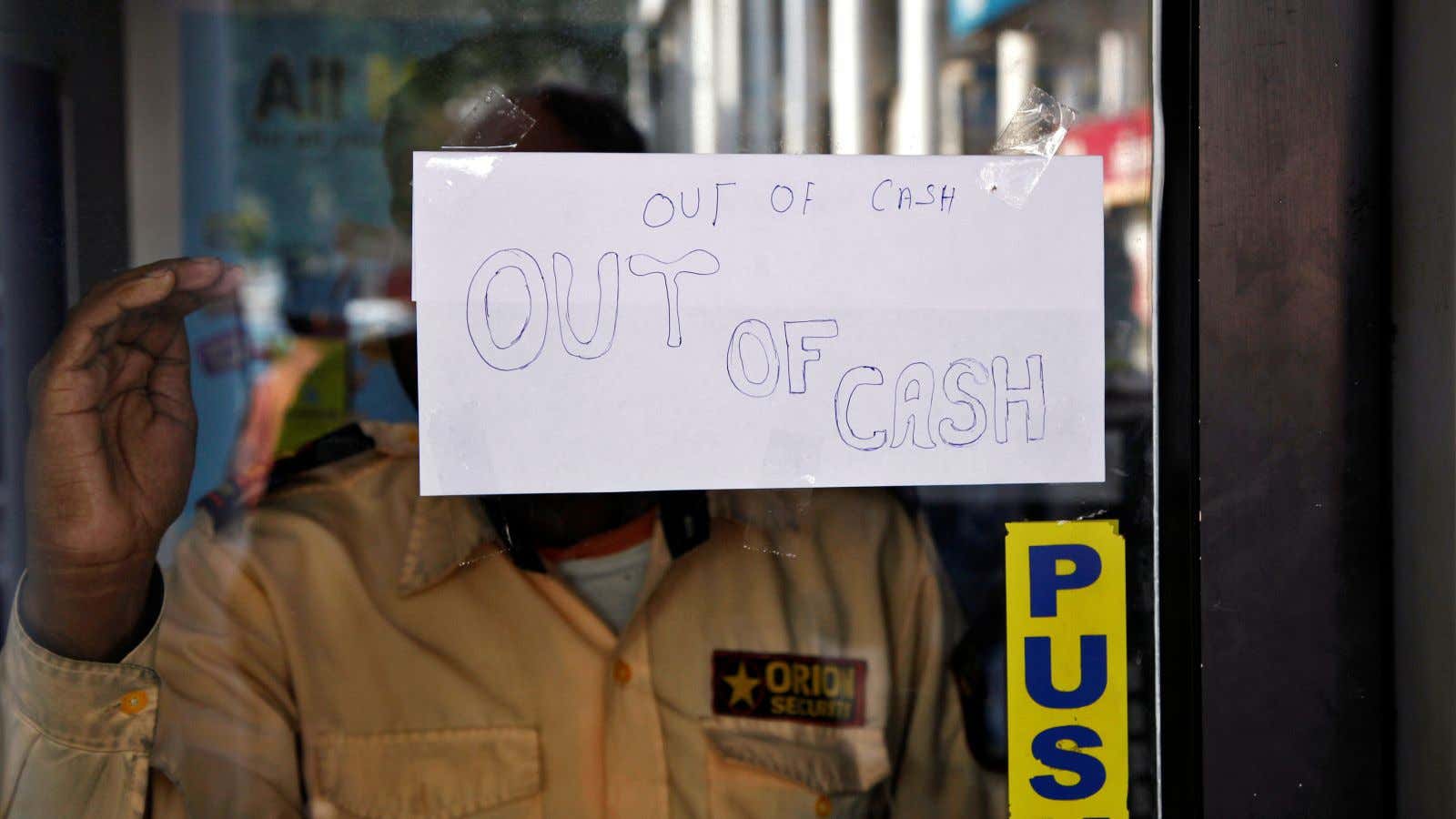India is staring at another bout of currency shortage—the third time in less than two years.
Last week, the Reserve Bank of India (RBI) announced that it will introduce new Rs100 notes. These will be different in look and size from the ones currently in circulation. And that will put ATM operators across the country in a quandary as their machines will have to be recalibrated, again.
Adjusting all the 200,000-odd ATMs in India to the new notes will take around a year and cost over Rs100 crore ($14.5 million), according to industry experts. The existing Rs100 notes will not be withdrawn immediately.
“Definitely, this is likely to lead to ATMs running dry again,” Sanjeev Patel, CEO of Tata Communications Payments Solutions, which runs the Indicash network of ATMs, told Quartz.
And here’s why.
Typically, there are four cassettes in an ATM machine. Usually, one tray is filed with the Rs2,000 notes, the other two with Rs500, and one with Rs100 notes. Now, however, there will be the Rs200 notes and the new and old Rs100 notes, all of different sizes.
If a certain ATM’s settings don’t match the new notes, then that machine can’t be fully loaded. So it will run out of cash faster.
“This presents new complications because there is a discrepancy between the various denominations, sizes, and the number of trays,” said Loney Antony, managing director of Hitachi Payment Services, another firm that runs and manages ATMs. “Moreover, we haven’t even finished re-calibrating all the machines to adjust for the new Rs200 notes, so this will be another challenge and will require a great deal of planning.”
Coming within three months of a similar near-crisis, this is bound to fuel public annoyance. ”Ultimately it is the common man who suffers, especially the people in rural areas and a lot of these problems can be avoided by better planning which has been ignored once again,” Patel said.
Repeat act
Over the last two years or so, India’s suffered multiple bouts of cashlessness.
In November 2016, the Narendra Modi government demonetised two high-value notes with the primary intention of curbing black money. Overnight, the amount of hard cash circulating in the economy plummeted by 86% (in value).
However, the government’s move wasn’t backed by the printing of ample new notes or timely adjustments of ATMs to the new notes’ dimensions. This resulted in an acute cash crunch and allegations that the move itself was poorly planned in general.
Over the following months, long-winding queues outside ATM counters became a familiar sight in India, worsening the problem posed by the existing shortage of such machines—on average, there is just one machine per 5,500 citizens in India, compared to other economies like Canada where there is one for every 545 citizens.
Nevertheless, as the months passed by, cash circulation returned to normal and by April 2018 it even surpassed the pre-demonetisation levels.
Then, in March-April this year, came the second cash-crunch streak in pockets of the country. The reason for this was said to be cash returning in circulation faster than the government and the RBI had expected. People also began hoarding cash, falling prey to rumours that deposits may be unsafe in banks. Also, there was the logistical problem as ATM recalibration had not yet been completed.
Meanwhile, the ATM industry is reeling under high costs and thin margins. Frequent tweaks like these only add to their woes.
“The government and the RBI need to realise that cash rules and so people need ATMs and bank branches,” said an executive with a private sector bank, requesting anonymity. “And they can’t wish cash away only because they want to. Therefore, these things need to be better planned to avoid an adverse impact on the industry.”
